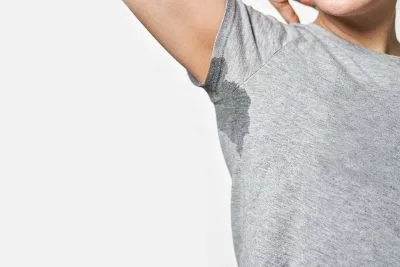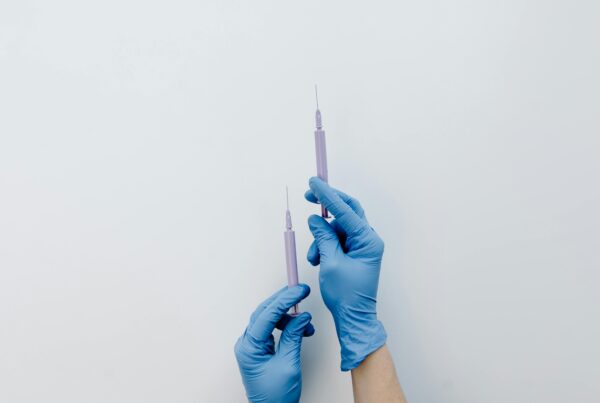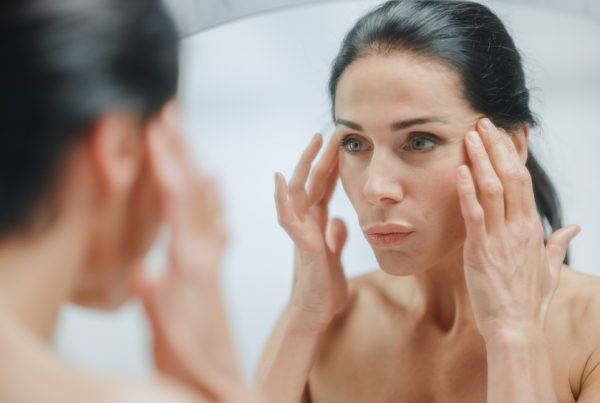We have all experienced moments of unexpected, excessive sweating. This can occur either from stress and nerves, heat, physical activity, or even a change in environment. For some, this is a once-off experience, but for many others, this is a daily struggle, referred to as hyperhidrosis.
The truth about sweat
Sweating is completely normal and is a natural and key function of the body. It is important to note that sweating is the body’s way of regulating body temperature. Yet for some, the apocrine glands, which are responsible for sweating, become overactive and produce more sweat than is needed.
I share insights into hyperhidrosis below. I also clarify that it isn’t limited to specific areas of the body, occurring across the body including the underarms, palms, feet, lower back, and face.
What is hyperhidrosis?
Hyperhidrosis is a medical condition that leads to excessive sweating beyond the body’s natural cooling needs. The condition affects approximately 5% of the world’s population – impacting their daily lives.
There are two main types of hyperhidrosis; primary and secondary:
- Primary hyperhidrosis is the most common form and usually starts during puberty.
- Secondary hyperhidrosis is less common and is typically caused by an underlying condition.
Hyperhidrosis typically impacts areas such as armpits, palms, soles of the feet, and face. These areas have a high concentration of sweat glands.
Symptoms and diagnosis
The diagnosis of primary focal hyperhidrosis can be made in the presence of visible and excessive sweating for at least six months duration without any clear cause.
Along with excessive sweating, at least two of the following characteristics also need to be present:
- Bilateral and relatively symmetrical areas of sweat
- Impairs daily activities
- Frequency of at least one episode per week
- Younger than 25 years old
- Positive family history
- Sweating during sleep
Treatment options for hyperhidrosis
Hyperhidrosis can have a significant impact on one’s life. It can lead to social embarrassment and anxiety, a knock to self-confidence, and can interfere with daily activities. There are a range of treatment options available to treat this medical condition – many of which are guided by budget and the severity of the condition.
Some of the non-invasive treatment options include topical antiperspirants, oral medication, and iontophoresis. I suggest applying topical antiperspirants that contain aluminum chloride hexahydrate right before bed on dry skin, as it is more effective than in the morning on damp skin. This will temporarily block the sweat glands.
General practitioners can also prescribe oral medications such as anticholinergics to help reduce sweating; while iontophoresis involves passing an electrical current through water and then placing the affected area into this ‘charge’ water. Invasive treatments include surgery such as local sweat gland resection and endoscopic thoracic sympathectomy.
Botulinum toxin for hyperhidrosis
The most common invasive treatment to treat hyperhidrosis, however, is botulinum toxin. This treatment treats sweating the same way it prevents wrinkles.
When injected, botulinum toxin blocks the nerve signals that stimulate sweat production. This then decreases the secretion of sweat. There is no evidence that using botulinum toxin to treat hyperhidrosis will cause rebound or excessive sweating in other areas. This is more commonly seen with surgical resection of nerve sympathectomy procedures.
The results are fast-acting and one can see the full effect of the treatment about two weeks after the injections. The results will last at least three months, but are also dependent on how quickly the body metabolizes botulinum toxin and where it is injected.
Conclusion
If you do suffer from hyperhidrosis it’s important to discuss your treatment plan with a medical professional. They will be able to advise on the best way to treat specific conditions and discuss concerns and questions about the treatment.
Like any treatment, there will be possible side effects, and patients can expect bruising, but it will be temporary.
If you think you are sweating too much, seek medical advice. There are plenty of treatments to consider that can manage your symptoms and improve your quality of life.





![women [longevity live]](https://longevitylive.com/wp-content/uploads/2020/01/photo-of-women-walking-down-the-street-1116984-100x100.jpg)










